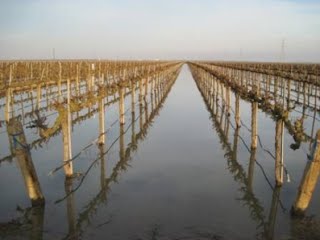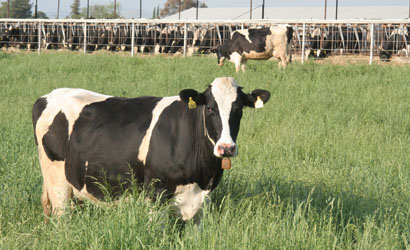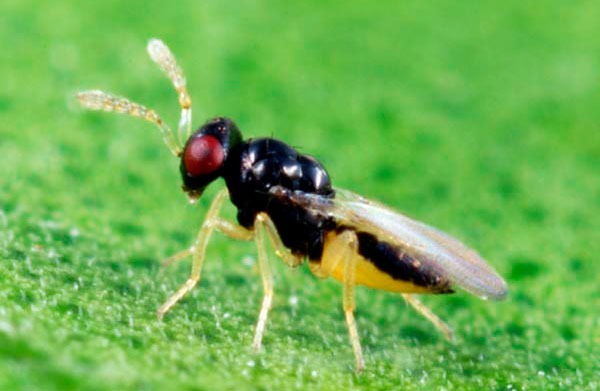
Interview by Lori Pottinger of the PPIC
We talked to Karen Ross, secretary of the California Department of Food and Agriculture, about agricultural programs designed to build climate resilience and support farmers’ financial resilience and water security.
PPIC: What kind of progress is California making with climate-smart agriculture programs?
KAREN ROSS: It’s very exciting to see progress in this area, and California’s farmers and ranchers are really leaning in. An important element of this program is our effort to reduce methane emissions from dairy and livestock. We’ve invested almost $300 million for dairy digesters and alternative manure management practices. In addition to reducing a powerful greenhouse gas, these investments can create alternative revenue streams for dairy farms—by generating renewable energy or manure-based products—which is very important given dairy’s economic volatility. These weren’t broadly used practices or technologies before, so public funding sends an important policy signal that the state thinks this is important work.
The State Water Efficiency and Enhancement Program (SWEEP) supports on-farm water efficiency, and it’s really been embraced by farmers—it’s probably our most popular program. We’ve invested more than $85 million into it since it was created during the last drought, and the governor’s budget includes $40 million more for the next two years. While this program is mostly used to convert to water-saving irrigation systems, it also supports investments in things like right-sized pumps, which reduce energy use and GHG emissions.
We’re also making exciting progress with our Healthy Soils Program—the only state program of its kind. It gives farmers the opportunity to be part of the solution to climate change, using practices that sequester carbon in soils—such as cover cropping, applying mulch or compost, and planting hedgerows, which also provide wildlife habitat. The proposed budget has $30 million for this program.
Another climate solution is the Air Board’s program to replace farm equipment with cleaner engines, which immediately helps improve air quality in the Central Valley while also reducing greenhouse gases.
The Sustainable Agricultural Lands Conservation program will continue to receive funding through the Greenhouse Gas Reduction Fund. UC Davis studies show that preserving farmland can reduce GHGs, because emissions from urban development are more intense per acre. Strategic land preservation is increasingly important for managing resiliency and climate change, and I think this program could become even more important given the potential for land fallowing resulting from groundwater sustainability plans. We’re going to have to be very strategic in deciding what is fallowed, and think holistically with an eye on lands that can help with groundwater recharge and carbon sequestration. Well-designed incentives and planning tools will be key.
To scale up these programs to the acreage we’d like to see, we have to work on two things: first, we need a clearer picture of the costs and benefits to prove the return on the investment. And we have to capture and quantify the water-saving capacity of soils by increasing carbon stores.
PPIC: How is the state planning to help small and underserved farmers navigate the regulatory landscape?
KR: The governor is keen to understand the landscape of regulations that fall on all farmers. We’ve identified at least 150 regulations that farmers have to comply with. The proposed budget provides funding for CDFA to work with the California Environmental Protection Agency to find redundancies and look for ways to make compliance easier while maintaining important public health and environmental protections. We’ve heard from cooperative extension specialists that they’re spending more time on helping farmers understand the regulatory compliance maze than on other key aspects of their work, such as helping with business planning and agronomics.
The governor’s budget also includes $6 million to help small and underserved farmers recover from COVID-19 disruptions. This will be through grants administered through nonprofits that work with small farmers, as well as partnering with UC Cooperative Extension to scale up their programs to support small farmers.
PPIC: How can the state encourage effective and equitable implementation of the Sustainable Groundwater Management Act (SGMA)?
KR: This is a big challenge. SGMA is locally driven, and it’s important that we support local processes. I’m gratified that the governor proposed $60 million in state investments to support local groundwater sustainability agencies in implementing their plans and undertaking land-use and economic planning. In thinking about resilience, we need to think of land, water, and air as an integrated system and not just from the perspective of our siloed programs. We’d like to find ways for SGMA, the Sustainable Agricultural Lands Conservation program, Healthy Soils, and other programs to work together to mitigate negative impacts and optimize outcomes for our rural farm communities.
PPIC: Going forward, what are your hopes for CDFA’s partnerships with the US Department of Agriculture (USDA)?
KR: USDA is extremely important for California farmers—we are partners on the ground in a number of nationally important plant and animal pest and disease programs as well as natural resource conservation and rural development. Our relationship with USDA has always been positive from one administration to another. I am happy to have Tom Vilsack back as secretary—he’s a tremendous public servant and a very strong leader. And everyone is thrilled to have a Californian as vice president!
President Biden has made it clear he’s focused on both rural America and climate change; he has a deep understanding of the unique opportunity for farmers and ranchers to play a role in addressing climate change. I’m very excited about the growing focus on agriculture-led climate solutions to sequester carbon and create renewable energy, all while ensuring farm productivity to make sure we continue to have strong food production systems.








